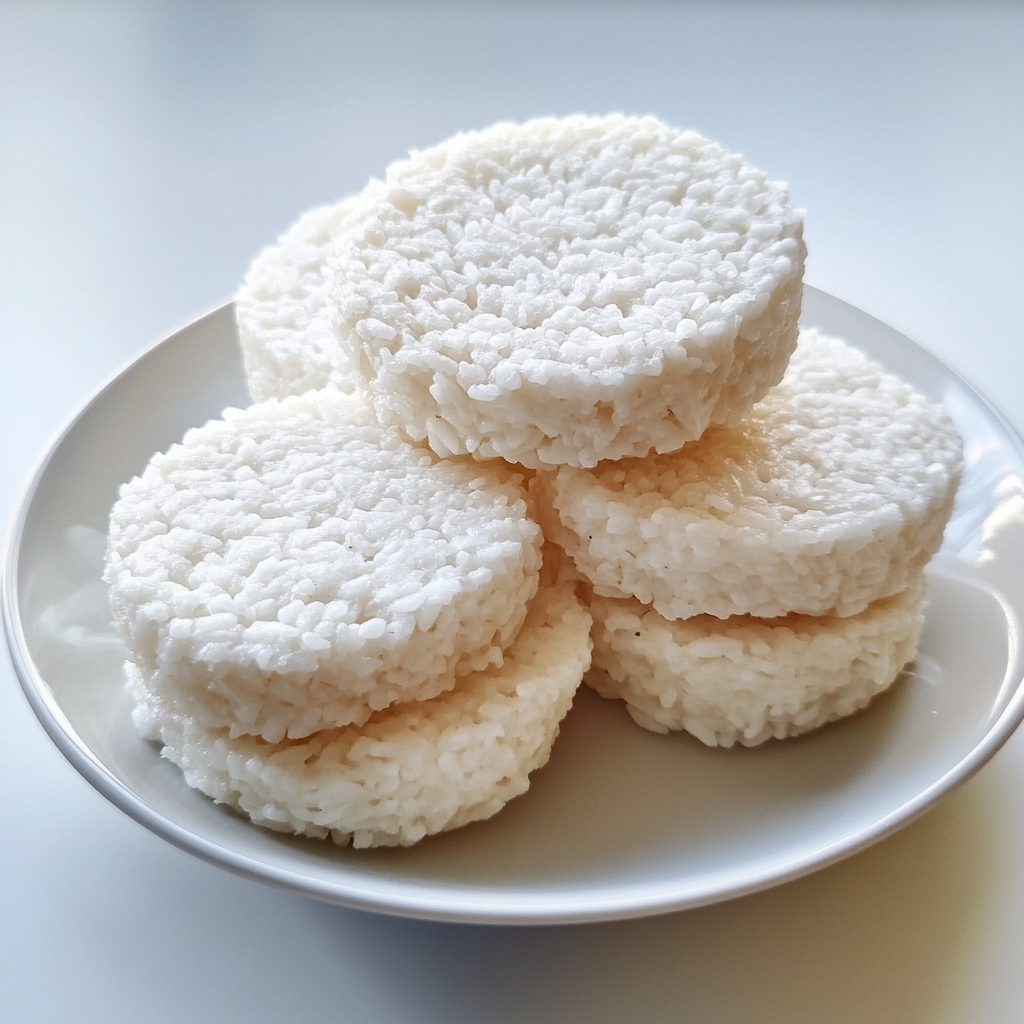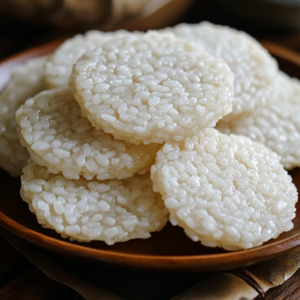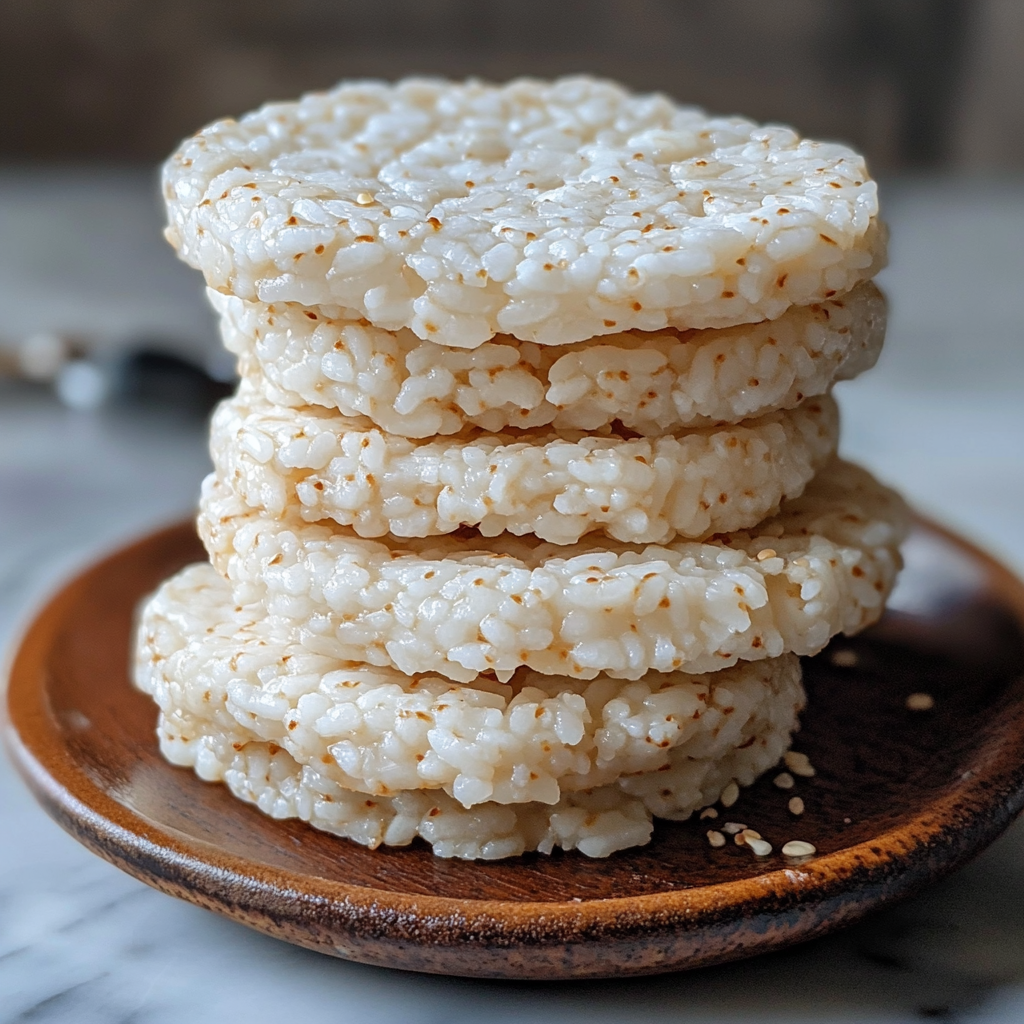
Rice cakes are a lightweight, crunchy snack that has become a key part of many people’s diets and recipes. Whether you prefer sweet or savory options, rice cakes offer endless possibilities for customization. These treats are perfect for anyone looking for a healthy, versatile meal or snack. This guide will explore everything you need to know about rice cakes, from their history and types to their health benefits, popular flavors, and easy recipes.
What Are Rice Cakes?
Rice cakes are typically made from puffed rice, which is pressed into a round shape. They are low in calories, making them a popular choice for many snack lovers. The history of rice cakes dates back to ancient cultures, including Korean tteok and Japanese senbei. These cakes come in different textures and flavors, depending on the grain used, such as glutinous rice, brown rice, or other varieties.
As rice cakes gained popularity worldwide, they became a convenient snack option. Brands now sell rice cakes as ready-to-eat snacks or meal bases. These cakes are also naturally gluten-free, which makes them an excellent choice for those with celiac disease or following gluten-free diets.
For more ideas on how to enjoy rice cakes, visit Food Network’s Guide to Rice Cakes.
Types of Rice Cakes
Rice cakes come in many types, each offering a different texture and flavor profile. The type of rice cake you choose depends on the ingredients and preparation method.
- Traditional Rice Cakes: These rice cakes are often steamed or boiled and then compressed into shape. Korean tteok is made with glutinous rice, while Japanese senbei is typically grilled and enjoyed as a snack.
- Flavored Rice Cakes: Today, rice cakes come in various flavors. You can find apple cinnamon, birthday cake, and salted caramel rice cakes on the sweet side, while savory options like tomato basil, dill pickle, and smoked salmon rice cakes are also popular.
- Puffed Rice Cakes: These lighter, airy cakes are made by puffing rice and often come in a variety of flavors, including chocolate and avocado. Popular brands like Quaker sell puffed rice cakes, offering a light and crunchy snack option.
For inspiration on how to flavor your rice cakes, check out Twinings’ blog, which shares creative ways to enhance your rice cake experience.
How Rice Cakes Are Made

Making rice cakes is a straightforward process. The main ingredient, puffed rice, is made by heating rice grains under high pressure until they pop. The grains are then compressed to form the cake shape.
- Traditional Method: In traditional recipes, rice is steamed and compressed into cakes. This results in a dense and chewy texture, perfect for cultural or ceremonial occasions.
- Modern Production: Commercially produced rice cakes are made by puffing rice and binding the pieces together with sugar, salt, or honey. Brands may add artificial flavorings and preservatives, so it’s always a good idea to check the labels for healthier options.
- Homemade Rice Cakes: You can easily make your own rice cakes at home. Experiment with different grains like brown rice, quinoa, or wild rice. Sweeteners like maple syrup or savory options like garlic and cheese can take your rice cakes to the next level.
Making rice cakes at home gives you the opportunity to customize the flavors and ingredients to fit your dietary preferences.
Popular Rice Cake Flavors
Rice cakes come in many sweet and savory options. Here are some of the most popular flavors:
- Sweet Flavors:
- Caramel Rice Cakes: Perfect for a light dessert or snack.
- Apple Cinnamon Rice Cakes: A sweet and spicy combination that’s ideal for breakfast or an afternoon pick-me-up.
- Birthday Cake Rice Cakes: A fun and festive treat, minus the calories of traditional cake.
- Savory Flavors:
- Smoked Salmon Rice Cakes: Combine cream cheese, smoked salmon, capers, and onions for a flavorful and satisfying snack or meal.
- Dill Pickle Rice Cakes: For those who love tangy, salty snacks, these rice cakes offer a satisfying crunch.
- Tomato Basil Rice Cakes: A simple and refreshing topping, perfect for a light lunch.
For more flavor ideas, head over to Twinings to find creative ways to enjoy rice cakes.
Rice Cakes as a Snack or Meal
Rice cakes are versatile enough to serve as more than just a snack—they can easily transform into a satisfying meal with the right toppings. Here are a few ideas:
- Peanut Butter Rice Cakes: Spread creamy peanut butter on a rice cake and top with banana slices or chia seeds for a filling and nutritious snack.
- Rice Cake Bruschetta: Spread diced tomatoes, basil, and a drizzle of olive oil on a rice cake for a Mediterranean-inspired treat.
- Rice Cake Sushi: Use rice cakes as a base for sushi. Add avocado, smoked salmon, and nori to create a healthy, delicious meal.
Rice cakes are perfect for breakfast or lunch. They’re quick to prepare, customizable, and offer a light but satisfying meal. For a hearty breakfast, pair your rice cakes with a breakfast sausage recipe.
Rice Cakes for Special Diets
Rice cakes fit well into many popular diet plans. Whether you’re following a gluten-free, low-carb, or vegan diet, rice cakes can adapt to your needs. Here’s how:
- For Weight Loss: Rice cakes are low in calories, making them an excellent choice for anyone looking to reduce their calorie intake. You can add nutritious toppings like avocado, hummus, or turkey slices for extra flavor and nutrients.
- For Gluten-Free Diets: Most rice cakes are naturally gluten-free, making them a great option for people with celiac disease or those who are sensitive to gluten.
- For Keto and Paleo Diets: Rice cakes can work in low-carb diets if eaten in moderation. You can top your rice cakes with healthy fats such as avocado, cheese, or nuts for a balanced snack or meal.
By choosing nutritious toppings, rice cakes can easily become part of any diet plan.

Creative Rice Cake Recipes
Here are 10 creative rice cake recipes that will keep your meals exciting and your taste buds happy:
- Peanut Butter Rice Cake: Spread peanut butter on your rice cake, add chia seeds, and top with banana slices for a healthy, filling snack.
- Avocado Rice Cake: Mash avocado, spread it on a rice cake, and season with sea salt, lemon juice, and chili flakes for a savory treat.
- Smoked Salmon Rice Cake: Top your rice cake with cream cheese, smoked salmon, capers, and onions for a luxurious snack.
- Rice Cake Bruschetta: Spread tomatoes, basil, and olive oil on a rice cake for an easy-to-make Mediterranean dish.
These recipes highlight just how versatile rice cakes can be, whether you prefer something sweet or savory.
FAQ on Rice Cakes
1. Are rice cakes healthy?
Yes, rice cakes can be part of a healthy diet, especially when made with whole grains like brown rice or quinoa. They are low in calories and can provide fiber and nutrients when topped with healthy ingredients.
2. Do rice cakes cause bloating?
Some people may experience bloating after eating rice cakes due to their high glycemic index. However, they’re still easy to digest for most people and can be enjoyed in moderation.
3. How long do rice cakes stay fresh?
Rice cakes typically stay fresh for about a month when stored in an airtight container. For the best flavor and texture, eat them within a few weeks.
Conclusion: The Versatility of Rice Cakes
Rice cakes are more than just a low-calorie snack. They are a healthy, gluten-free, and versatile food that can be enjoyed at any time of day. With endless flavor options and the ability to adapt to any diet, rice cakes are a great choice for anyone looking to enjoy a light and satisfying meal or snack.
For a different twist, check out the sweet potato cake or try making garlic parmesan chicken pasta to complement your rice cakes.
